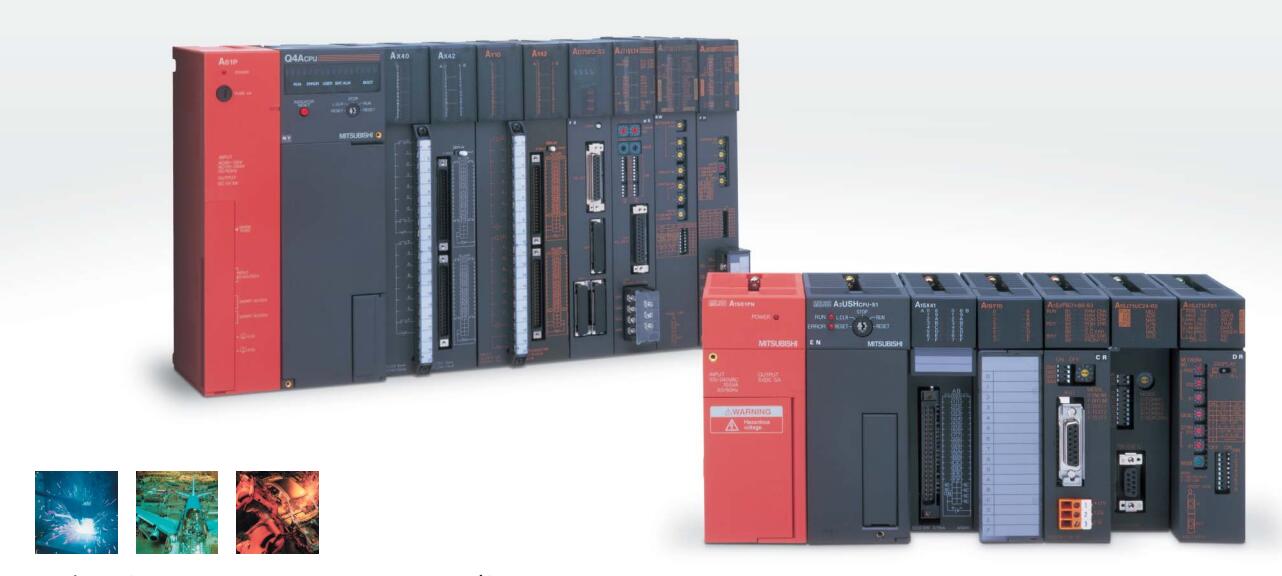Brand sort
MITSUBISHI A7GT-MCA256K-LD Market price | A7GT-MCA256K-LD Introduction
MITSUBISHI A7GT-MCA256K-LD
Motor series: low inertia, medium and small capacity.
Using a serial absolute / incremental encoder.
Rated output power: 0.4kw.
Rated speed: 3000rpm.
With the brake: without.
Shaft end: straight shaft.
Comparison of single phase induction motor and servo motor.
The working principle of the AC servo motor is similar to that of the single phase induction motor,
But the rotor resistance of the former is much larger than that of the latter,
So the servo motor is compared with the single machine asynchronous motor,
There are three notable features:
1, large starting torque A7GT-MCA256K-LD
2, a wide range of operation.
3, no rotation phenomenon.
AC servo motor running smoothly, low noise.
But the control characteristic is non-linear, and because the rotor resistance is big, the loss is big, the efficiency is low,
Therefore, compared with the same capacity DC servo motor, the volume is large and the weight is heavy,
So it is only suitable for 0.5-100W small power control system. Input points: 32 points.
Input voltage and current: 7mA DC24V.
Input response time: 10ms.
16 point /1 a public side.
Positive pole sharing.
Output points: 24 points.
Output voltage: DC24V.
OFF leakage current: 0.1mA.
Output response time: 12ms.
Output type: transistor output.
8 point /1 a public side.
With the surge absorber.
34 point terminal station.
PLC is introduced by the relay control technology after the development of micro processing technology,
Can be easily and reliably used for switching control.
As the analog quantity can be converted into digital quantity, the number of digital quantity is just a number of switching value,
Therefore, after the conversion of analog, PLC can also be reliable for processing control.
Because the continuous production process often has the analog quantity, the analog quantity control is sometimes called process control.
Analog quantity is not electricity, and PLC can only handle digital quantity, quantity of electricity.
All to realize the conversion between them to have the sensor, the analog quantity into a number of power.
If this power is not standard, but also through the transmitter,
The non-standard power into a standard electrical signal, such as 1-5V, 4-20mA, 0-10V, etc..
At the same time, there is also an analog input unit (A/D),
Transform these standard electrical signals into digital signals,
The analog output unit (D/A), in order to transform the digital quantity after PLC processing into analog quantity -- standard electric signal.
So the standard telecommunication number, the conversion between the number of operations to use a variety of computing.
This requires the resolution of the analog unit and the standard electrical signal.
A7GT-MCA256K-LD Operation manual / Instructions / Catalog download link: /searchDownload.html?Search=A7GT-MCA256K-LD&select=5
Using a serial absolute / incremental encoder.
Rated output power: 0.4kw.
Rated speed: 3000rpm.
With the brake: without.
Shaft end: straight shaft.
Comparison of single phase induction motor and servo motor.
The working principle of the AC servo motor is similar to that of the single phase induction motor,
But the rotor resistance of the former is much larger than that of the latter,
So the servo motor is compared with the single machine asynchronous motor,
There are three notable features:
1, large starting torque A7GT-MCA256K-LD
2, a wide range of operation.
3, no rotation phenomenon.
AC servo motor running smoothly, low noise.
But the control characteristic is non-linear, and because the rotor resistance is big, the loss is big, the efficiency is low,
Therefore, compared with the same capacity DC servo motor, the volume is large and the weight is heavy,
So it is only suitable for 0.5-100W small power control system. Input points: 32 points.
Input voltage and current: 7mA DC24V.
Input response time: 10ms.
16 point /1 a public side.
Positive pole sharing.
Output points: 24 points.
Output voltage: DC24V.
OFF leakage current: 0.1mA.
Output response time: 12ms.
Output type: transistor output.
8 point /1 a public side.
With the surge absorber.
34 point terminal station.
PLC is introduced by the relay control technology after the development of micro processing technology,
Can be easily and reliably used for switching control.
As the analog quantity can be converted into digital quantity, the number of digital quantity is just a number of switching value,
Therefore, after the conversion of analog, PLC can also be reliable for processing control.
Because the continuous production process often has the analog quantity, the analog quantity control is sometimes called process control.
Analog quantity is not electricity, and PLC can only handle digital quantity, quantity of electricity.
All to realize the conversion between them to have the sensor, the analog quantity into a number of power.
If this power is not standard, but also through the transmitter,
The non-standard power into a standard electrical signal, such as 1-5V, 4-20mA, 0-10V, etc..
At the same time, there is also an analog input unit (A/D),
Transform these standard electrical signals into digital signals,
The analog output unit (D/A), in order to transform the digital quantity after PLC processing into analog quantity -- standard electric signal.
So the standard telecommunication number, the conversion between the number of operations to use a variety of computing.
This requires the resolution of the analog unit and the standard electrical signal.
A7GT-MCA256K-LD Operation manual / Instructions / Catalog download link: /searchDownload.html?Search=A7GT-MCA256K-LD&select=5
...more relevant model market price >>>>
Related products
Related download


 next one:
next one:  Last one:
Last one: